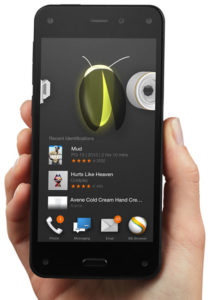
Online stores could soon become a lot more like their real world counterparts thanks to new, 3-D immersive technology announced Monday by Kinset.
Kinset 3D Store technology allows retailers to create and operate retail stores that look and feel like those in the brick-and-mortar world. Shoppers in Kinset’s 3-D stores can browse through virtual aisles displaying hundreds of items of merchandise, linger, look and make purchases just as they would in a real store.
The software has been in closed testing for the past seven months, Kinset said. Starting Monday, consumers can try it through a free Kinset Shopping Browser utility, available at Kinset.com, that is downloaded to their computers like Adobe Acrobat or Flash, the company said.
“Powerful personal computers and fast broadband Web connectivity allowed us to build the first software technology that can present realistic online stores in 3-D,” said John Butler, CEO of Kinset.
Brookstone Online
Hand in hand with Kinset’s product release, nationwide specialty retailer Brookstone announced that it is now working with Kinset to be the first national retailer to open a 3-D online Kinset Store that recreates the look and feel of its physical stores.
“The new Brookstone Virtual Store will allow our online customers to experience the same type of engaging and interactive experience with our products that our retail customers currently enjoy,” said Greg Sweeney, vice president and general manager of direct sales at Brookstone. “We believe opening Brookstone’s Virtual Kinset 3D Store will provide yet another compelling reason for customers to think of us and our innovative products during the competitive 2007 holiday shopping season.”
Retail Testing
In addition to an enhanced online shopping experience for consumers, Kinset’s technology offers retailers new testing capabilities for store design, layout and merchandising, the company said.
With an embedded capability Kinset describes as “massively parallel online simulation,” retailers can quickly and easily build virtual stores that look like real store floor plans, then assign one store design to some shoppers and another design to other shoppers. Kinset tracks shoppers’ activity and lets retailers compare results using detailed analytical output. Those lessons can then be translated into real world stores as well.
For shoppers, Kinset requires Microsoft Windows XP or Vista, a broadband Internet connection and 1 GB of system memory. To test out the technology, consumers should choose “Go Shopping” on Kinset’s site. Currently, items purchased in the stores there will be delivered by Amazon.com, but eventually retailers can launch their own Kinset 3D Stores, accessible from their 2-D Web sites and fully integrated with their own product fulfillment systems.
A Question of Context
In general, consumers currently value 3-D capabilities most when they are applied to product images rather than shopping environments, Patti Freeman Evans, a senior analyst with JupiterResearch, told the E-Commerce Times. That’s particularly true when consumers are shopping for consumer electronics or other high-ticket items, she said.
When it comes to 3-D shopping environments, on the other hand, “consumers are still getting used to the idea,” she noted.
The virtual atmosphere is reminiscent of that in Second Life, but Second Life is not focused on shopping, Freeman Evans explained. It’s focused more on entertainment — something shoppers are not necessarily interested in while they make purchase decisions, she explained.
Nevertheless, consumers do like to have options, she noted, and replacing the catalog-style, page-by-page metaphor of most online shopping environments will open up more opportunities for consumers to browse and discover products in the store themselves — “more serendipitous opportunity,” she said.
“This may not be the ultimate solution,” she concluded, “but it’s a step away from the catalog-type paradigm we’ve seen so far.”
Closer Coordination
Kinset’s technology is not the first to create an online virtual shopping environment, but “there has been a lot of interest in the last few years in coordinating online and in-store environments,” Ray Burke, E.W. Kelley Chair of Business Administration and research partner in the Center for Education and Research in Retailing at Indiana University, told the E-Commerce Times.
“There is definitely a trend toward closer coordination between the electronic and physical presence of retail stores, and this technology is a move in that direction,” he said.
Such technologies can be valuable for their ability to let consumers get a sense of a store’s products and layout before visiting, thereby serving as a tool to help them when they visit a physical store in person. By mimicking the physical environment more closely, they also allow consumers to browse in a more natural way, he said.
Ability to Browse
“The Web is a great search medium, but if you just want to browse, current online interfaces are not very engaging or enjoyable,” he explained. “When you look at what’s been happening in video games, it’s just a matter of time before that comes to e-commerce.”
Some products will lend themselves to 3-D online stores more naturally, he cautioned — particularly those for which consumers make their decisions based primarily on the visual appearance of the product.
“If you’re shopping for computers, on the other hand, where most of what you need to know is inside the box, then a 3-D representation may not help you — it may actually get in the way,” he added.
Lessons from past experiments in the area also suggest that user interfaces must be simple and easy to navigate, and that downloads must be quick, Burke noted.
“At the end of the day, we need to provide consumers with the same cues that they use to make decisions in the physical store,” he concluded. “If images aren’t clear enough, for example, consumers aren’t going to use the technology. On the other hand, if the technology does recreate those critical elements of the shopping experience, then there’s a lot of potential for it to be successful.”

























































Social Media
See all Social Media